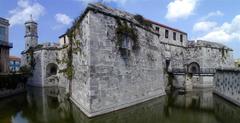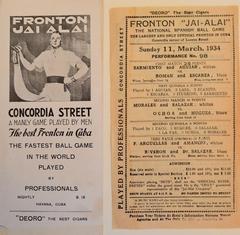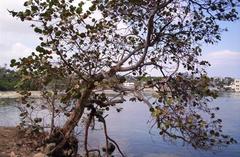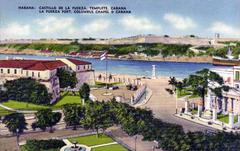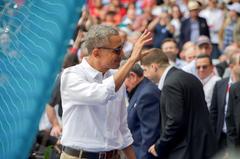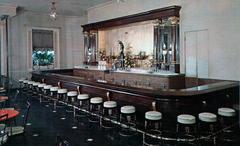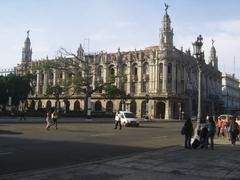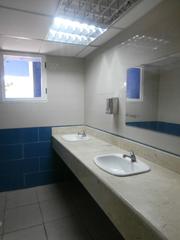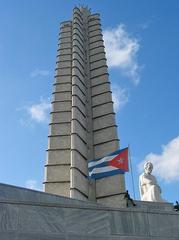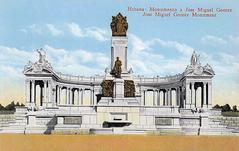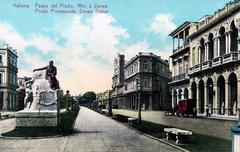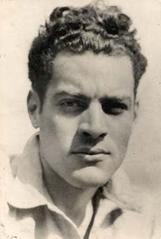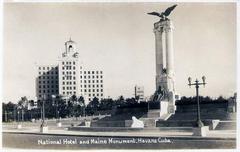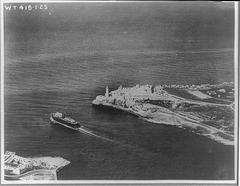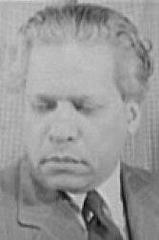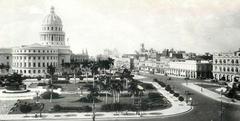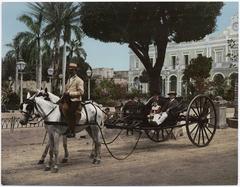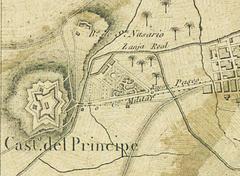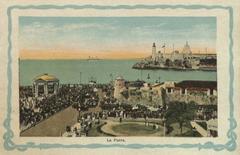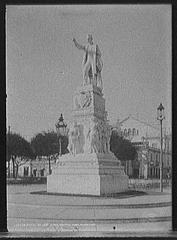Students’ Monument in Havana Province, Cuba: Visiting Hours, Tickets, and History
Date: 14/06/2025
Introduction
The Students’ Monuments in Havana Province, Cuba, are powerful symbols of the island’s enduring struggle for justice, education, and national identity. From the tribute to eight executed medical students to the grand José Martí Memorial and the neoclassical José Miguel Gómez Monument, these sites collectively embody Cuba’s complex historical narrative, its revolutionary spirit, and its commitment to the pursuit of knowledge and freedom. This comprehensive guide presents the history, architectural features, cultural significance, and essential visitor information for each monument, ensuring that travelers and history enthusiasts can fully appreciate these living landmarks (ECURED; Audiala; Audiala).
Table of Contents
- Historical Background
- Architectural Features and Symbolism
- Cultural and National Significance
- Visitor Information
- Special Events and Commemorations
- Preservation and Contemporary Relevance
- Frequently Asked Questions (FAQ)
- Conclusion
- References and Further Reading
Historical Background
The Execution of the Eight Medical Students
The Students’ Monument near the University of Havana commemorates one of the most tragic episodes in Cuban history: the execution of eight medical students on November 27, 1871. Accused without evidence of desecrating the tomb of a Spanish journalist, these students were swiftly tried and executed by colonial authorities. Their deaths sparked outrage throughout Cuba, fueling anti-colonial sentiment and galvanizing the growing independence movement (ECURED; Love Cuba). Today, the monument stands as a solemn site of remembrance and annual commemoration, especially on November 27.
José Martí Memorial: Origins and Symbolism
The José Martí Memorial is one of Havana’s most iconic landmarks and a beacon of Cuban national pride. Construction began in 1953 to mark the centenary of José Martí’s birth and was completed in 1958, just before the Cuban Revolution. Designed by a team of Cuban architects, the memorial features a soaring 142-meter star-shaped tower, symbolizing the five original provinces of Cuba. At its base sits a contemplative 17-meter marble statue of Martí, the intellectual and revolutionary “Apostle of Cuban Independence,” whose writings and actions inspired generations (Audiala; tripcuba.org; travel2next.com).
The monument’s completion on the eve of the revolution positioned it as both a tribute to Martí and a symbolic bridge to the revolutionary ideals that would soon transform Cuba. The adjacent Plaza de la Revolución became the focal point for political gatherings and historic speeches, cementing the memorial’s role in Cuban civic life (havana-guide.com).
José Miguel Gómez Monument: Neoclassical Heritage
The José Miguel Gómez Monument, sometimes referred to as the Students’ Monument in architectural guides, is an outstanding example of early 20th-century Cuban neoclassicism. Designed by Giovanni Nicolini and inaugurated in 1936, the monument features a sweeping semi-circular colonnade, a central obelisk, and a bronze statue of José Miguel Gómez—Cuba’s second president. Located along Havana’s elegant Paseo de Martí, the monument’s layout encourages reflection, gathering, and civic participation (Audiala).
Architectural Features and Symbolism
- Students’ Monument (Colón Cemetery): A neoclassical funerary memorial featuring sculptural representations of the eight executed medical students and their names, set within one of Latin America’s grandest cemeteries (Love Cuba).
- José Martí Memorial: A 142-meter star-shaped tower clad in Cuban marble, symbolizing national unity. The five-pointed base represents Cuba’s original provinces. The 17-meter marble statue of Martí personifies contemplation and sacrifice (Audiala).
- José Miguel Gómez Monument: Classic neoclassical forms—semi-circular colonnade, central obelisk, and bronze statue—evoke antiquity, strength, and national remembrance (Audiala).
These monuments share themes of sacrifice, justice, and national pride, expressed through classical motifs, local materials, and carefully considered spatial arrangements.
Cultural and National Significance
Each monument plays a central role in Cuba’s national narrative:
- The Students’ Monument is a rallying point for student activism, annual commemorations, and civic engagement. Its legacy is woven into the Cuban education system and public consciousness (Love Cuba).
- The José Martí Memorial is a site of pilgrimage for Cubans and visitors alike, hosting major national ceremonies and housing a museum dedicated to Martí’s life and writings (Audiala; tripcuba.org).
- The José Miguel Gómez Monument serves as both a commemorative landmark and a focus for reflection on Cuba’s republican and post-republican eras, including debates on social justice and inclusion (Audiala).
These monuments are also recurring subjects in Cuban art, literature, and music, reinforcing their place in national memory and creative expression.
Visitor Information
Visiting Hours
- Students’ Monument (Colón Cemetery): Open daily from 8:00 AM to 5:00 PM.
- José Martí Memorial: Open Tuesday–Sunday, 9:00 AM to 5:00 PM; closed Mondays.
- José Miguel Gómez Monument: Open daily from 8:00 AM to 6:00 PM; as an outdoor public site, it is accessible at all times.
Tickets and Admission
- Students’ Monument (Colón Cemetery): Generally free; some guided tours may charge a fee (Love Cuba).
- José Martí Memorial: Admission is around 5 CUC for adults; discounts for students, seniors, and groups. Tickets sold on-site; guided tours available for an extra fee.
- José Miguel Gómez Monument: Free admission; guided tours may have fees (Audiala).
Accessibility
All monuments offer paved pathways and ramps for wheelchair users. Staff assistance is available at the José Martí Memorial and University of Havana area. Some cemetery paths may be uneven.
Guided Tours and Educational Programs
Guided tours (often in English and Spanish) provide historical context and can be arranged through local agencies or on-site. Educational programs and commemorative events are organized around key anniversaries.
Getting There and Nearby Attractions
- Colón Cemetery & Students’ Monument: Easily reached by taxi or bus from central Havana. Nearby: Mausoleum of Catalina Lasa, Pantheon of Máximo Gómez Báez, El Bodegon del Asado restaurant.
- José Martí Memorial: Located at Plaza de la Revolución; close to the Cuban Capitol Building, National Library, and Ministry of the Interior.
- José Miguel Gómez Monument: On Paseo de Martí, near the National Capitol, El Templete, and other downtown attractions.
Photography Tips
Morning and late afternoon offer the best lighting for photography. Discreet, respectful photography is encouraged, especially during ceremonies.
Special Events and Commemorations
- November 27 (Students’ Monument): Annual ceremonies, speeches, and processions honor the executed students.
- January 28 & May 19 (José Martí Memorial): Martí’s birthday and the anniversary of his death are marked by major civic events.
- Other dates: Restoration anniversaries and national holidays are often celebrated at these sites.
Preservation and Contemporary Relevance
Ongoing restoration and the addition of interpretive materials ensure that these monuments remain accessible, meaningful, and educational for future generations (Audiala). Contemporary debates on historical memory and justice keep these landmarks at the heart of Cuban public life.
Frequently Asked Questions (FAQ)
Q: What are the usual visiting hours?
A: Students’ Monument (Colón Cemetery): 8:00 AM–5:00 PM; José Martí Memorial: 9:00 AM–5:00 PM (closed Mondays); José Miguel Gómez Monument: 8:00 AM–6:00 PM.
Q: Are tickets required?
A: Most sites are free; José Martí Memorial tickets are required (approx. 5 CUC). Guided tours may incur additional costs.
Q: Is there wheelchair access?
A: Yes, all major monuments have accessible paths and ramps.
Q: When is the best time to visit?
A: For commemorative events: November 27, January 28, or May 19. For quiet visits, weekday mornings are ideal.
Q: Are guided tours available?
A: Yes, often in English and Spanish; book through agencies or on-site.
Q: Can I take photographs?
A: Yes, but be discreet, especially during ceremonies.
Conclusion
The Students’ Monuments of Havana are much more than historical sites—they are living symbols of justice, resistance, and Cuban identity. Visiting these monuments is an immersive journey through Cuba’s struggle for freedom, its revolutionary ideals, and its vibrant culture. With accessible hours, affordable or free entry, and guided tours, every traveler can connect deeply with the nation’s soul.
Plan your visit today, download the Audiala app for current updates, and explore more of Havana’s rich heritage with our related guides.
References and Further Reading
- José Martí Memorial, Audiala
- Students’ Monument Havana, Love Cuba
- José Miguel Gómez Monument, Audiala
- Students’ Monument Havana, ECURED
- Havana Tours, The Tourist Checklist
- University of Havana, Lonely Planet
- Quinta de los Molinos, National Geographic
- Cuba’s Best – Tipping
- Cuban Architecture, Wikipedia

